SC Rewind: Short Story Time
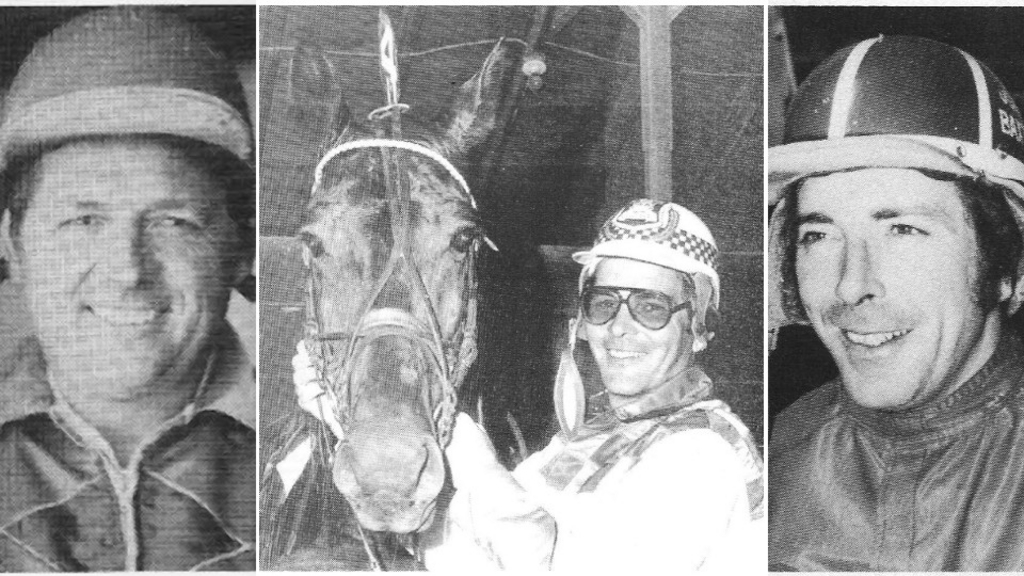
This week Robert Smith has chosen to offer a couple of short stories for his Rewind offering. These personalities and events were in the news back in the 1980 range. It was a great time in our sport's past and great to relive a few memories.
A Fast Track Thanks To Diesel Fuel
Back in 1979 the track management at Stampede Park in Calgary had a problem on their hands trying to keep the track safe, speedy and to do it in an economical manner. The winter session at this track had faced this problem since its inception back in 1974. The problems of frost, snow, ice and mud; all brought on by thaws was perplexing to say the least. Management was not about to undertake the costly installation of a crushed limestone surface which was the track of choice to ensure a safe winter racing surface.
Much of the decision making fell on the shoulders of Track Superintendent Doug Perdew, himself a former leading driver at this very track. "We had to try something," he said and he admitted his suggestion was "mostly luck" that led to his discovery. He found that diesel fuel applied to the track would greatly improve the racing strip for winter racing.
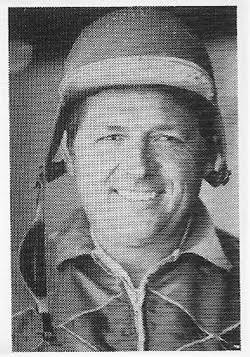
Doug Perdew, track superintendent at Stampede Park, pictured here in his days a trainer and driver (the Standardbred Record photo)
The discovery may have quickly led to a newly coined nickname of "Diesel Doug." He figured that an application of 1,000 gallons should last for at least three weeks. He told reporter Doug Abraham "It prevents snow from compacting into ice and when the track is frozen and dry it enables harrowing to provide the thin, fine cushion that's needed." A strong smell of diesel fuel wafted around the track, including the press box area, but it seemed like a small inconvenience for the benefit it was apparently providing.
Soon after the new plan was implemented, trainer-driver John Baxter helped to prove just how effective the new surface treatment would turn out to be. Baxter, originally from Ontario but by then a long-time fixture in Western Canada, went a very fast mile with a horse called Look Twice. The winning fractions were consistent throughout the mile after an opening quarter in :29.3 and a mile time of 2:02.4. This horse had a current lifetime best of 2:01.2 but taken during the summer time.
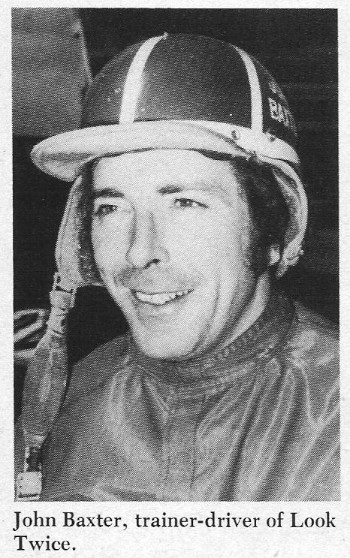
Please see below for a trivia question related to this picture of John Baxter (Photo courtesy the Standardbred Record)
After three weeks of winter action that season, Stampede Park was averaging $302,000 in daily wagering which was about a 25 percent increase over the previous year's figures. Several more fast miles were logged by other horses who were undoubtedly benefiting from the new and improved winter racing conditions.
My thanks to Doug Abraham, a gentleman who wrote a lot of great stories about the harness racing scene in Western Canada for many years.
Note: This what I hope has been an interesting sort of "behind the scenes" story took place some 43 years ago. I can't help but think our views on the environment might have changed quite a bit since then.
Young Canadian Horseman Doing Well At Vernon Downs - Looking Back To 1979
Bill Sharpe, a young 27-year-old horseman from Oshawa, was enjoying a productive season at Vernon Downs in 1979. Three years previous to this, Sharpe had been stabled here with the Vernon branch of the large William Wellwood stable. His successes on that visit had proven to be good enough that he came back in 1978 to launch his own public stable.
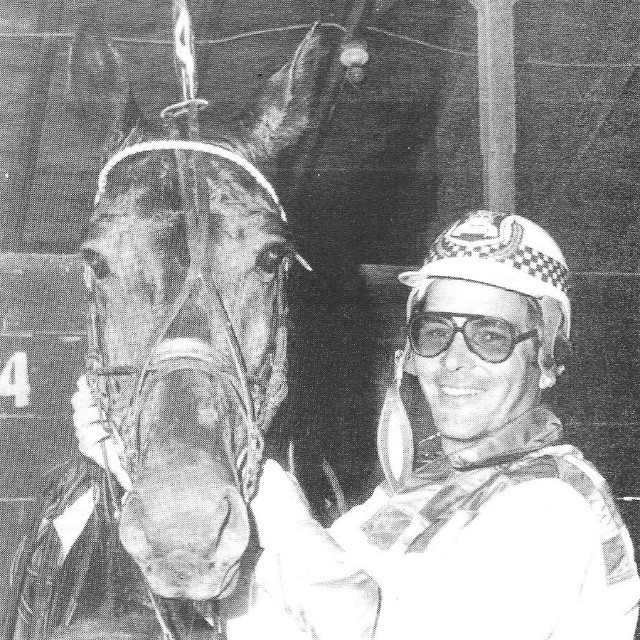
Bill Sharpe, 27-year-old horseman from Oshawa, appears with his stable's promising trotter Super Victory at Vernon Downs (Courtesy of the Standardbred)
His stable of nine head at the present time while moderate in size had some rapidly improving performers. His best pacer was the four-year-old Baroness Wilma, one of two horses that belonged to his newest owners Harry Snowden, a rubber company executive, and Ms. Mary Kelterborn, both of Willowdale. Their horses raced in the name of the Beeline Stable. They also had a promising trotter called Coaltown Road, by then already a winner of more than $20,000 lifetime.
Sharpe seemed to be very hopeful for one of his up and coming stable members, a trotter named Super Victory. A one-time member of the famous Stanley Dancer stable, this fellow was now owned by another of Sharpe's owners, Frank Philips of Whitby, Ont. It seems that this horse had a bad habit of making breaks which made getting him ready to race a major hurdle. Thanks to the input of George Johnson, an old friend of Sharpe's father, he rather quickly became a much better performer.
After hearing of the horse's ongoing problem Johnson suggested that young Sharpe try a specially-designed trotting boot that might be the answer. It was designed to protect the area where the fledgling trotter was hitting himself. Soon after the experiment began the horse qualified in a respectable 2:05.2; obviously staying on gait and minding his manners. Just four nights later in only his second pari-mutuel start of his life, Super Victory was a winner in 2:04.2. The son of Super Bowl out of the Noble Victory mare Egyptian Jody soon began to draw the attention of many around the Vernon backstretch and eventually went on to a five-win season.
This happening along with other positive signs helped to raise the confidence level of the young Canadian horseman. He told reporter Gordon Pepper in an interview "Just give me a couple of years with my current owners who are all determined to have good horses around them, and I'll get our share against anybody's comparably sized outfit."
Quote For The Week: This week's quote is really not a quote but rather a picture.
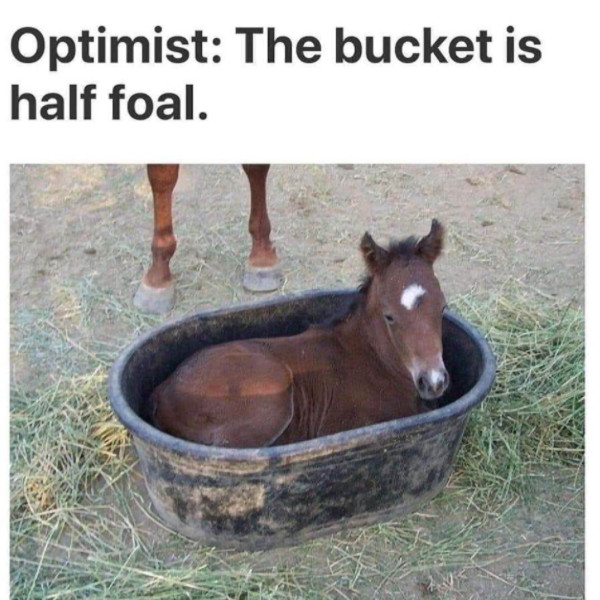
Photo courtesy of Barbara Day on the Foxboro Memorabilia website. This is a cute one.
Trivia Question: John Baxter, pictured with a short story shown above, was originally from Ontario and moved to western Canada around the late 1960's I believe. Question is, What well known Ontario stable/farm did he work for prior to heading west?
Who Is It?
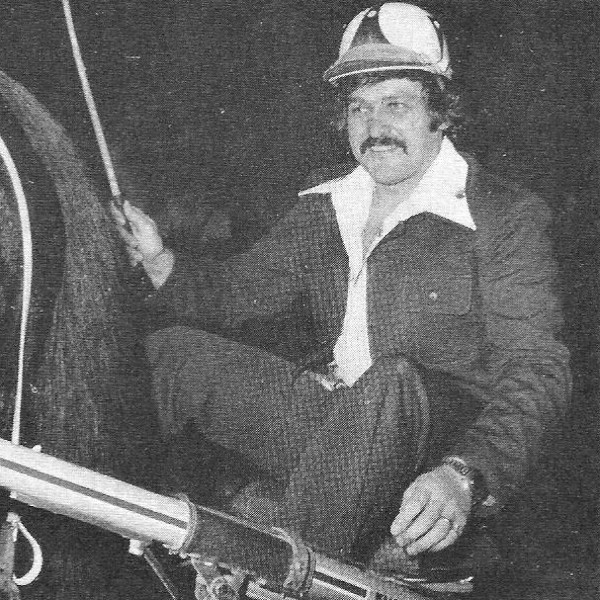
Can you name this fellow? Clue: he was in a rather uncustomary spot in this photo (Harness Horse photo)
Who Else Is It?
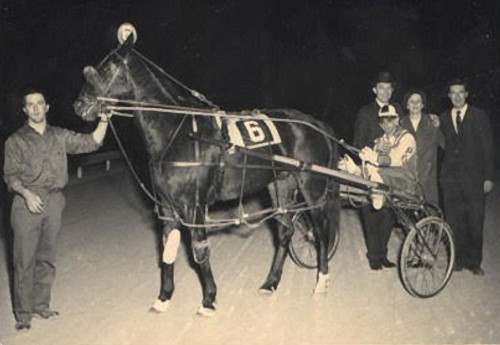
Can you correctly identify this young lad sitting in the sulky seat? Let us know who you think it is.


This week's pictures
The correct answers for this week's pictures and trivia question were as follows: The trivia question re horseman John Baxter: John worked for a number of years for The Hon. Earl Rowe at Rowelands Farm located near Newton Robinson, Ont.
The first picture was Bernie Parent, goalie for the world champion Philadelphia Flyers. He along with a number of other hockey personalities had more than a passing interest in harness racing. This was taken at Brandywine Raceway in 1974.
The bottom picture was driver Pat Crowe as identified by several readers.
Thanks so much for participating.
John Baxter
I believe he worked for Earle Rowe
Who is it? and Diesel Doug
Yeah, Bernie Parent took his Stanley Cups to Philadelphia after Toronto Maple Leafs traded him, apparently because they thought they had enough Cups after their last one in 1967!
Diesel Doug Perdew retired to Tumbler Ridge, B.C. And John Baxter continues an active role in Western harness racing after his brilliant trainer-driver career, which included a start with the Earl Rowe Stable in Ontario before he moved west in the 1960s (along with Orval and Sam Hawkins and they brought never-before-seen-out-west wheel discs with them!).
Man in the suit in the bike
The man in the suit in the bike was long time Flyer goalie, Bernie Parent. Back in the Flyers Stanley Cup years , Liberty Bell has some Flyer players driving horses in job carts. Of course Flyer Rick McLeish was a long time horse owner, having horses with Ben Stafford. And the long time radio voice of the Flyers, Gene Hart called races down at Brandywine Raceway.
Howard Gluck
First of all Robert thanks…
First of all Robert thanks for the great story of my life long friend Quite a Will Sharpe. John Baxter might have worked for Armstrong brothers. Bernie Parent and Pat Crowe. I do know for a fact it's not Cam Fella!!
Who else is it: Pat Crowe
Who else is it: Pat Crowe